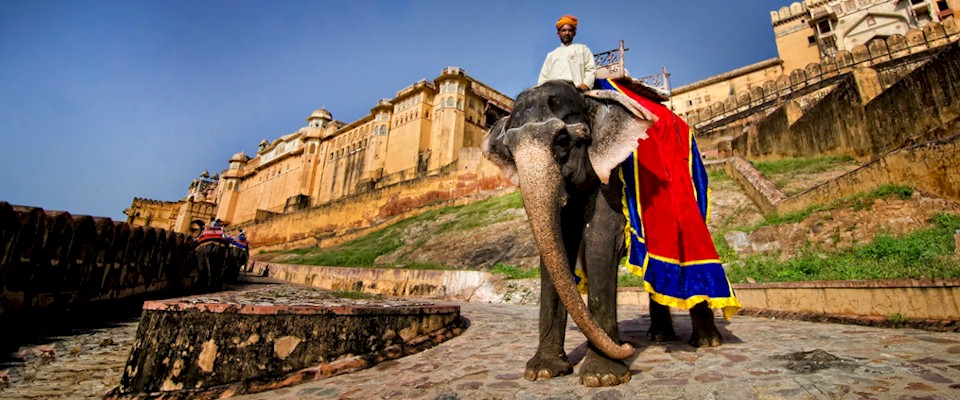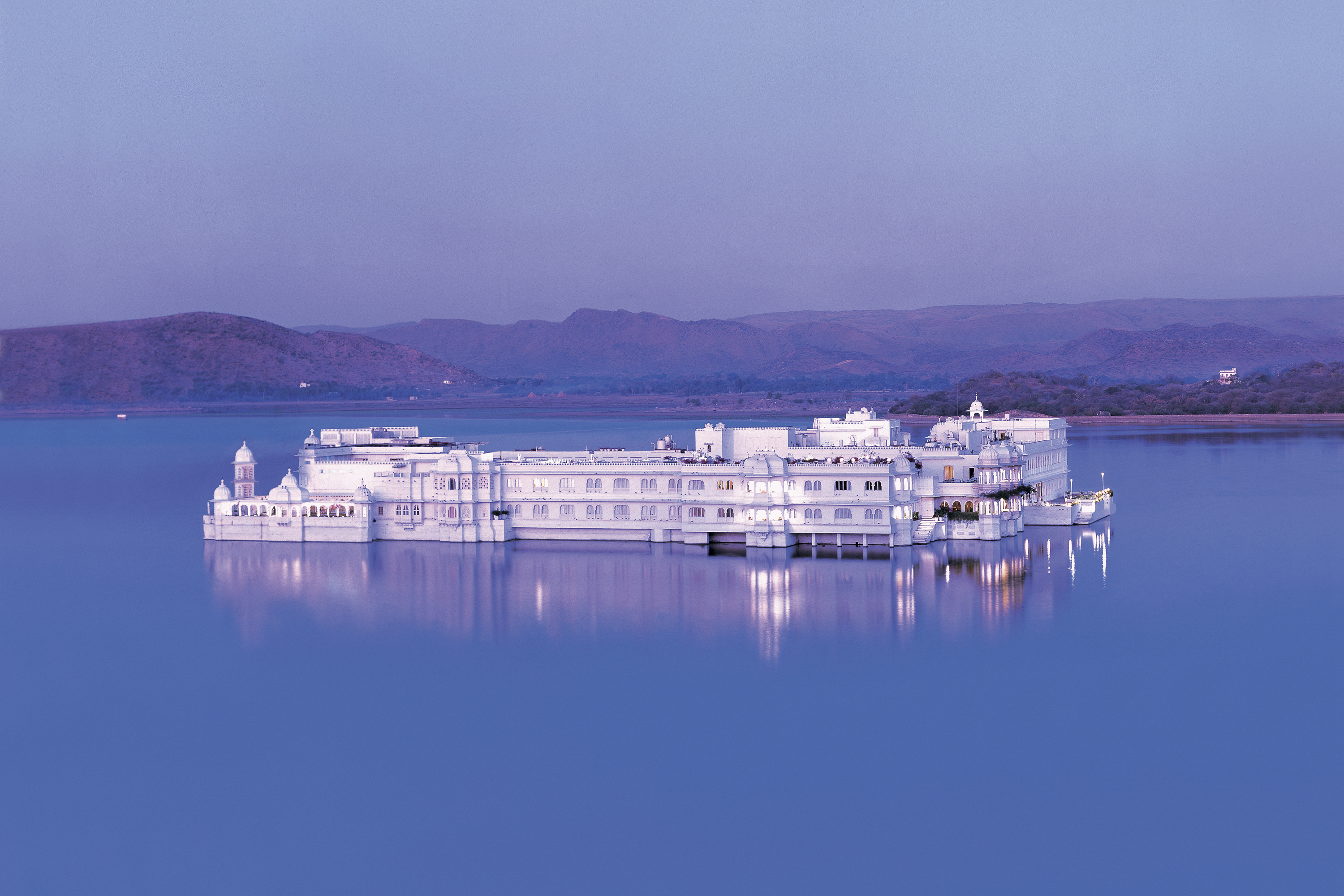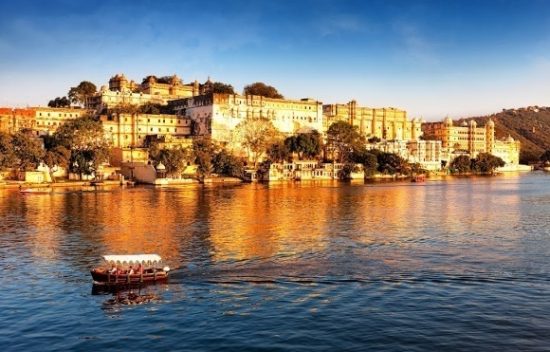Rajasthan Land Of Heritage – Culture – Royalty
Rajasthan is the largest state of India, it is one of the most popular tourism destinations in India. This state has great tourism potential and enthralls tourists and vacationers with its awe-inspiring tourism options in the forms of culture, tradition, temples, art & architecture, history, forts & palaces, monument, havelis, wildlife sanctuaries & parks, rippling sand dunes, Thar Desert etc.
There are many fascinating travel destinations in the state which can be visited, explored and enjoyed on your travel and tours in this royal state of India.
Jaipur :-
Jaipur is the capital of this state. Jaipur is also the largest city in the princely state of Rajasthan.It was founded in 1727, by the Kachwaha Rajput Ruler Sawai Jaisingh II, who was the ruler of Amber. Jaipur is also known by the nickname ‘Pink City of India’ which is due to the distinctive saffron or pink color of the buildings of city. The planning of the city was done according to the Vedic Vastu Shastra (Indian architecture). The well planned streets and detailed and artistic architecture make it one of the top preferred tourist locations.

Forts, monuments, temples, Gardens, museums and vast market places of Jaipur bring tourists who come from all around the world to experience the food, fun and frolic at this wonderful town. Jaipur is also home to a huge no. of arts and craft with over 20 unique specializations. Jaipur is the state capital city and very popular tourist destination in India. Worth visit attractions in Jaipur city are Amber Fort, City Palace, Albert Hall Museum, Hawa Mahal, Jantar Mantar, Jaigarh Fort, Nahargarh Fort and Heritage Hotels And much more places to visit
Udaipur :-
Udaipur is also known as the City of Lakes. The city was the capital of the Sisodiya Rajputs of Mewar and it was founded in 1553 by the Sisodiya Rajput Ruler Maharana Udai Singh II. The Mewar Rajputs founded the city to relocate their capital from Chittor to a more secure location.

Udaipur city is known for its elegant palaces, forts, and lovely lakes. It is one of the most beautiful and romantic cities in India. Key attractions of tourist interest in the city are City Palace, Jagdish Temple, Lake Palace, Pichola Lake, Fateh Prakash Palace, Monsoon Palace, Fateh Sagar Lake, Udai Sagar Lake, Eklingji Temple, Nagda Temple, etc. While in a few texts, it has been termed as the Venice of the East. Today, most of the palaces have been converted into hotels, thus attracting a huge no. of tourist crowd to this city.
Jodhpur :-
Jodhpur is also the second most populated city of Rajasthan after Jaipur. The city was founded in 1459 by the Rathore Rajput Ruler, Rao Jodha Singh of Marwar. The city was founded as Marwar’s new capital after the fall of the former capital of Mandore. Jodhpur is also called the Sun City as it enjoys a bright sunny weather all year round. Strategically, it is considered to be the most important city of western Rajasthan
Jodhpur is an important tourist destination as well. Jodhpur has been listed many a times in various tourism magazines and documentaries and has topped the lonely planet’s list of most extraordinary place to stay in 2014. The various hill forts, palaces and the old walled city are just a handful of attractions from the multitude that this wonderful city has to offer. Jodhpur is also known as the Blue City of India, Jodhpur is the second largest city in the state. It is a wonderful tourist place to be visited on Rajasthan travels and tours with attractions like mammoth Mehrangarh Fort, Jaswant Thada Memorial, Umaid Bhawan Palace, Mandore Gardens and many heritage hotels.
Jaisalmer : –
Jaisalmer is also known as the Golden City of India The aptly named “golden city”, which comes from its view during the day, the city of Jaisalmer lies in the heart of the Thar Desert. The city was founded by The Bhati Rajput ruler Maharawal Jaisal Singh in 1156 Ad. The city gets its name from the golden sands of the Thar Desert and the same golden colored sandstone used in the city’s architecture. The city is a famous tourist spot due to its magnificent architecture and the various arts and crafts which are unique to this region.
The city thrives on tourism, and can be called a home away from home for a huge no. of tourists from all around the world. Key attractions of tourist interest in the city are Its Golden Fort, Jain Temples, Havelis and an exciting trip to rippling sand dunes of vast Thar Desert. The unique feature about the city of Jaisalmer is its architecture. It was built as a walled city which makes it one of the largest living forts in the world. The fort has numerous eateries that offer Italian, French and local cuisines. Visit during the months of November and December and you will enjoy this castle city to its fullest
Bikaner :-
Bikaner is also known as the Camel City, Bikaner is a wonderful tourist place to visit in Rajasthan. It holds a prime position in boosting tourism in Rajasthan with major attractions like Junagarh Fort, Lalgarh Palace, Havelis, and sand dunes.
The city of Bikaner was founded in 1488 by the Rathore Rajput Ruler Rao Bika. Rao Bika was the son of the Rathore Ruler Rao Jodha who founded Jodhpur. The place is known for its forts and food. The various arts and crafts of this place are also unique, especially the intricately carved windowpanes called jharokhas. It is one town we would personally recommend for you to visit if you want to experience the authentic taste of rajasthani cuisines. The various fairs held in Bikaner also attract a huge no. of visitors from all around India and the world. Bikaner is a wonderful tourist place to visit in Rajasthan. It holds a prime position in boosting tourism in Rajasthan with major attractions like Junagarh Fort, Lalgarh Palace, Havelis, sand dunes And the famous temples like Karni Mata and Laxmi Nath Temple etc.
Pushkar :-
Pushkar is a holy city in Rajasthan. It is one of the most sacred cities in India with lots of attractions like Lord Brahma Temple, Gayatri Temple, Savitri Temple, Pushkar Palace, Rose Gardens, Pushkar Ghats, etc.
Lying in the Ajmer District of Rajasthan, the holy City of Pushkar is often described as the king of pilgrimage sites in India. The town is located at the shores of the Pushkar Lake, which was created by the tears of Lord Shiva. The town is famous for its temples and various Ghats which are frequented by hundreds of visitors during the annual bath.
Chittorgarh :-
The ancient city of Chittorgarh also known as Chittor, was said to have been founded by the Maurya Dynasty. However its significance rose when the Ruler of the Sisodiya Rajput Clan of Mewar captured the city in 734 Ad and made it the capital of Mewar. The place is known to be the birthplace of many great warriors and historical figures like the Great Maharana Pratap and the Hindu saint, Meera Bai.
One of the major places to visit in Chittorgarh is the Chittorgarh fort, which is the largest fort in India. The fort was founded in the 7th century by the 1st Sisodiya Rajput Ruler Bappa Rawal and spreads over an area of 2.8 sq kilometers and its highest elevation point is 1,075 meters above sea level. The fort complex itself contains several palaces, gardens and temples most of which have a great historical significance.
Mount Abu :-
The place takes pride of it being the only hill station in the desert state of Rajasthan. Mount Abu is situated in the Aravalli mountain range and is a part of the Sirohi District of Rajasthan. Mount Abu was known as the Arbuda Mountain, which has been mentioned in the Hindu Epic Mahabharata and is known for to be the place where the Great Sage Vashishta retired. The hill station houses many ancient sites and temples which are frequented by many pilgrims from across India along with many forts and lakes.
The Mount Abu Wildlife Sanctuary, Trevor’s Crocodile Park, Nakki Lake, the most Famous Dilwara Jain temples, and the Achalgarh Fort which was built in the 17th century is the major attraction of city to visit
Ranthambhore :–
Ranthambore is one of the most popular destinations of Rajasthan tourism. It is globally famous for Ranthambore Tiger Reserve & National Park. The key attractions of the park are tigers, Ranthambore Fort, Jogi Mahal and ancient banyan tree. The Ranthambore Fort and the Ranthambore National park Both places are the attraction of city. The Ranthambore national Park and its wild life century is the heaven for wild life photographers.
